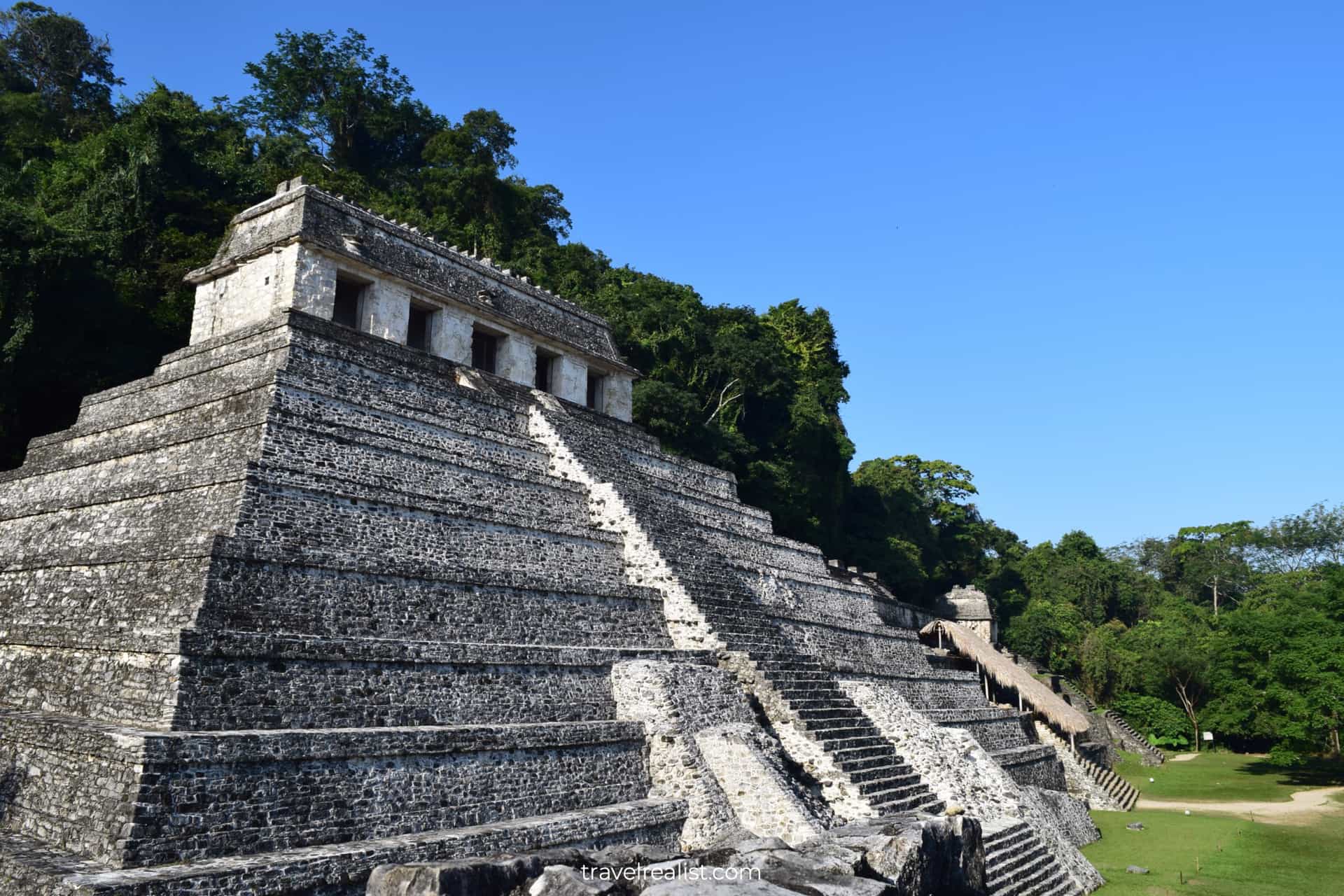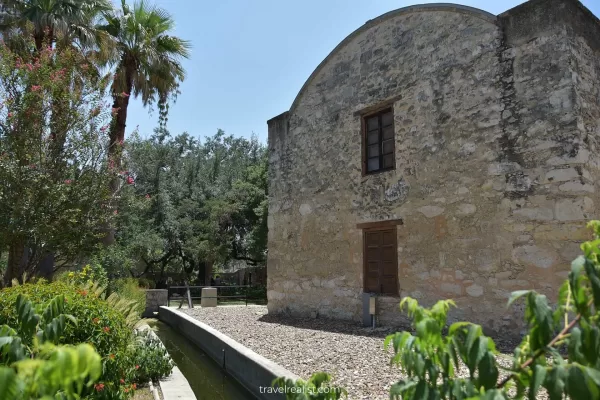Fort Lee Historic Park: Bridge, Batteries, and Manhattan Views
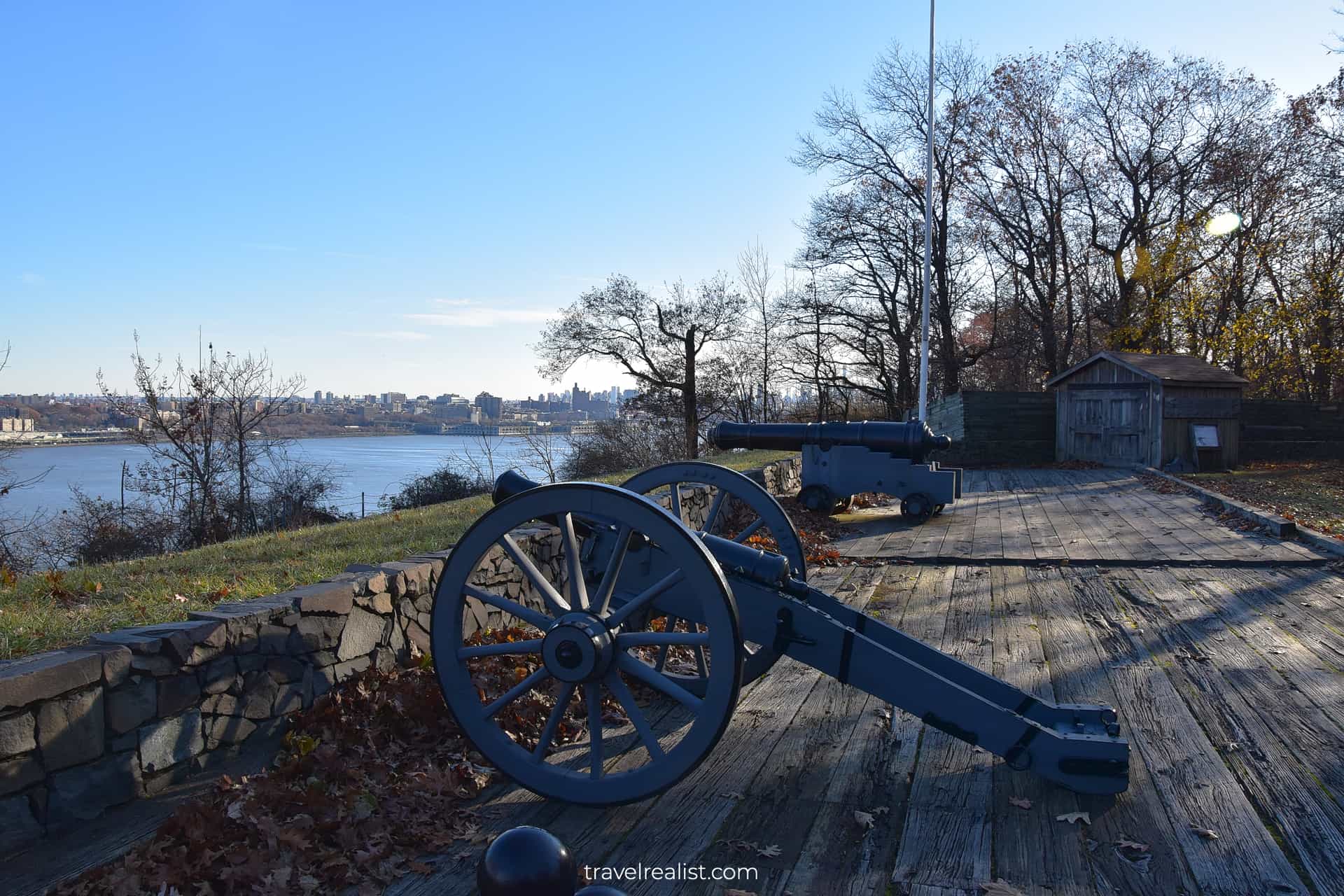
This realistic Fort Lee Historic Park Guide helps you plan your next adventure in this small but scenic park.
Fort Lee Historic Park is a small part of Palisades Interstate Park in New Jersey. The park museum and restored structures give you a way to learn more about the American Revolutionary War.
This post includes affiliate links that will earn us commission if you make a purchase via these links.
Sights & Places of Interest
Fort Lee Historic Park is atop of the Hudson River Palisades. These steep cliffs rise some 500 ft (150 m) from the river levels. This whole area is within Palisades Interstate Park.
But Fort Lee played a role in the American history long before Palisades Interstate Park came to be. It was home to an actual Fort Lee back in 1776. This was a dark page in the Revolutionary War history.
The British were besieging Boston, Massachusetts. They captured Fort Washington and New York City. The Army had to abandon Fort Lee. The Visitor Center exhibits describe these events in greater detail.
This Fort Lee Historic Park Guide follows a path from the George Washington Bridge to the Main Battery. You will see restored batteries, living quarters, and a block house.
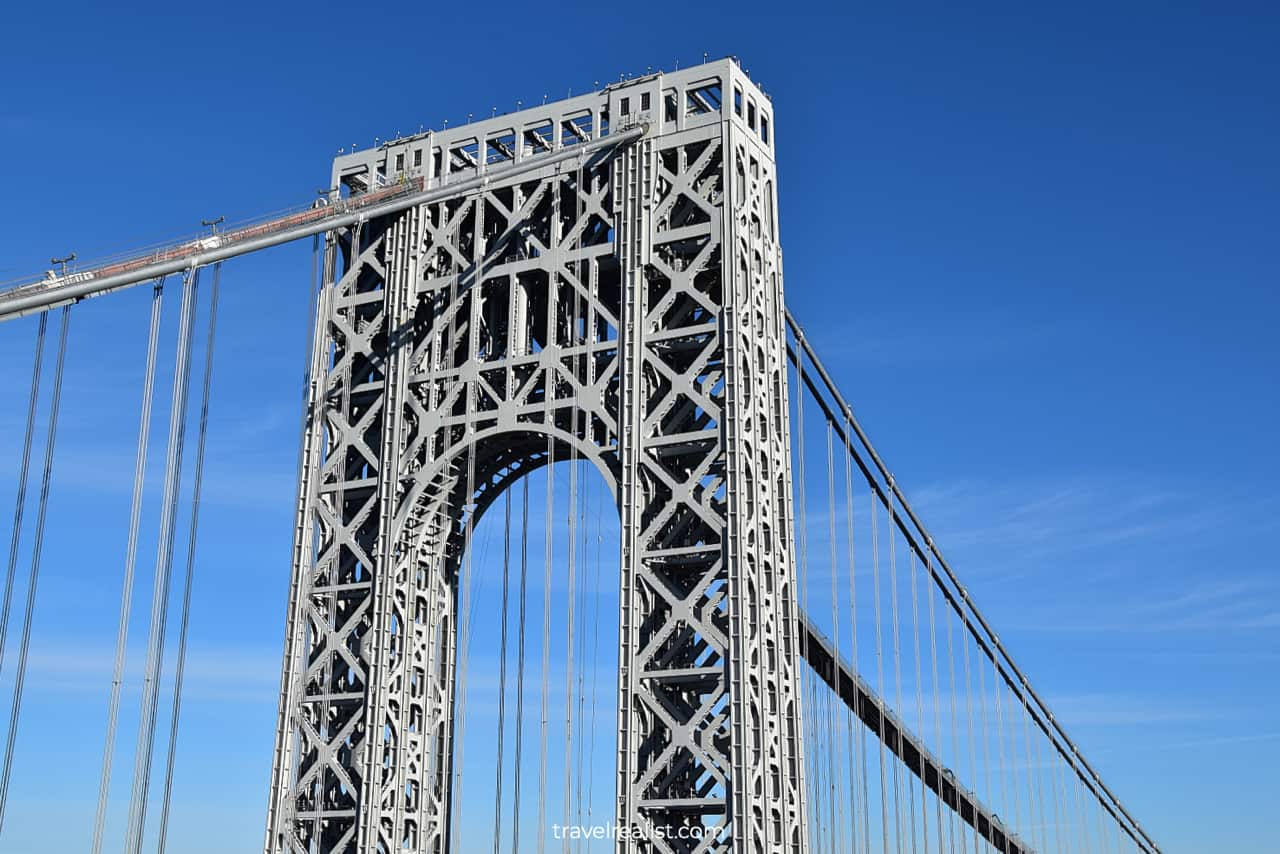
1. George Washington Bridge
The George Washington Bridge Viewing Platform is the closest attraction to the parking lot in Fort Lee. It has little to do with the American Revolutionary War beyond the name of the Bridge.
But it still makes sense to start your visit with a look at this engineering wonder. The George Washington Bridge is a monumental structure that connects New Jersey with New York.
It is the only bridge between New Jersey and Manhattan. There are two decks on the George Washington Bridge. The upper deck has been there since 1931. The lower deck was added in 1962.
Despite this addition and 14 lanes of traffic, this toll bridge is a bottleneck. Traffic jams are frequent around it. But the bridge is indispensable for over 100 million people who cross it every year.
Heavy traffic on Interstate Highway I-95 and the Bridge creates issues when visiting Fort Lee. It might take you longer to reach the park. You have to expect some noise pollution during your visit, too.
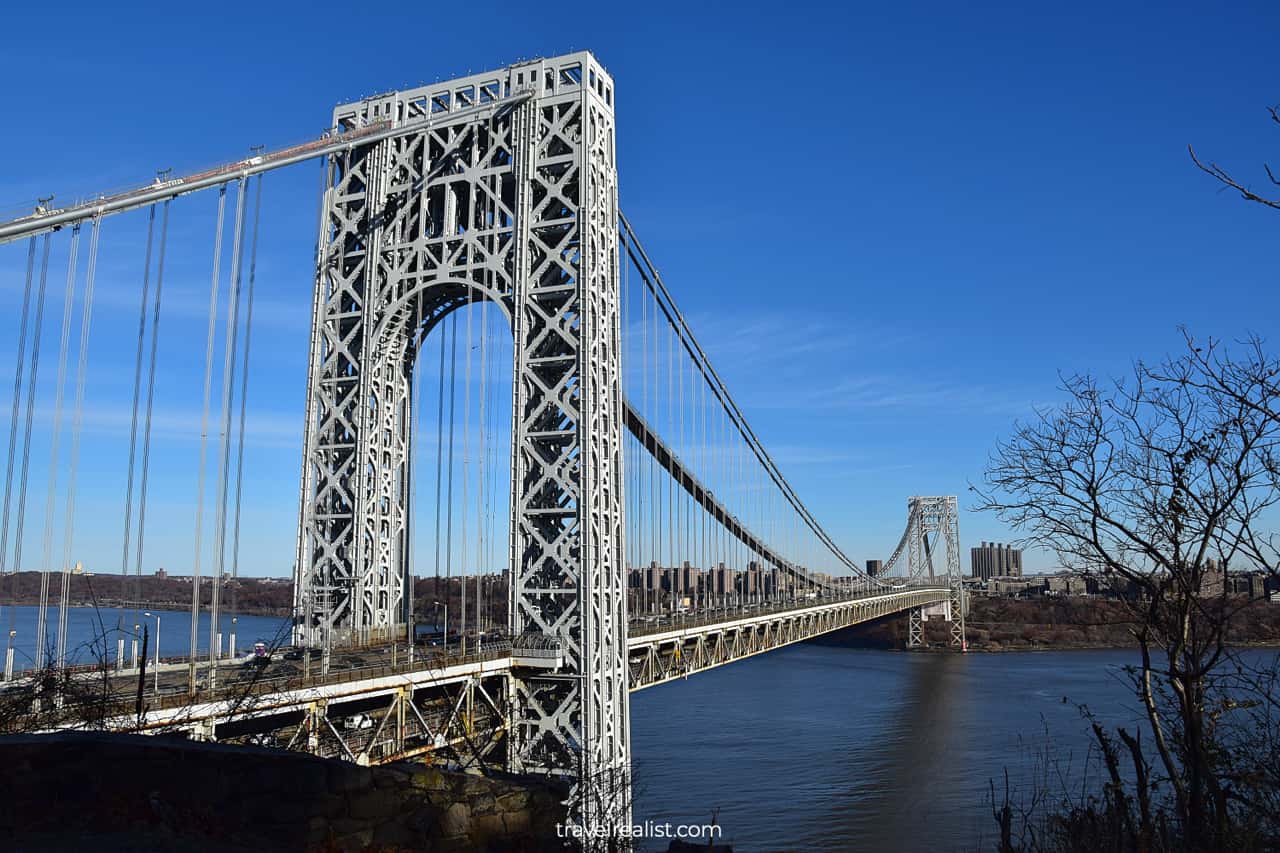
2. Visitor Center
You should follow a flat and accessible path from the Bridge Viewpoint to other sights in Fort Lee. Even a walk through the Picnic Area is a delight during the fall foliage season.
You will reach the Visitor Center in just a few minutes. It is impossible to miss this two-story spread out building. You might not feel like making a stop at the Visitor Center in this small park.
But there are a few good reasons to reconsider. The Visitor Center in Fort Lee Historic Park is more than a ranger station. A small museum is a better description of this place.
There are a few items that date back to the American Revolutionary War. You could see uniforms, cannons, and other weapons of that era. Thoughtful exhibits tell a story of Fort Lee’s role in the War.
Allow about 15 minutes to see all the items. An in-depth exploration could take a bit longer. Do not hesitate to ask a ranger if you have any questions about the park history.
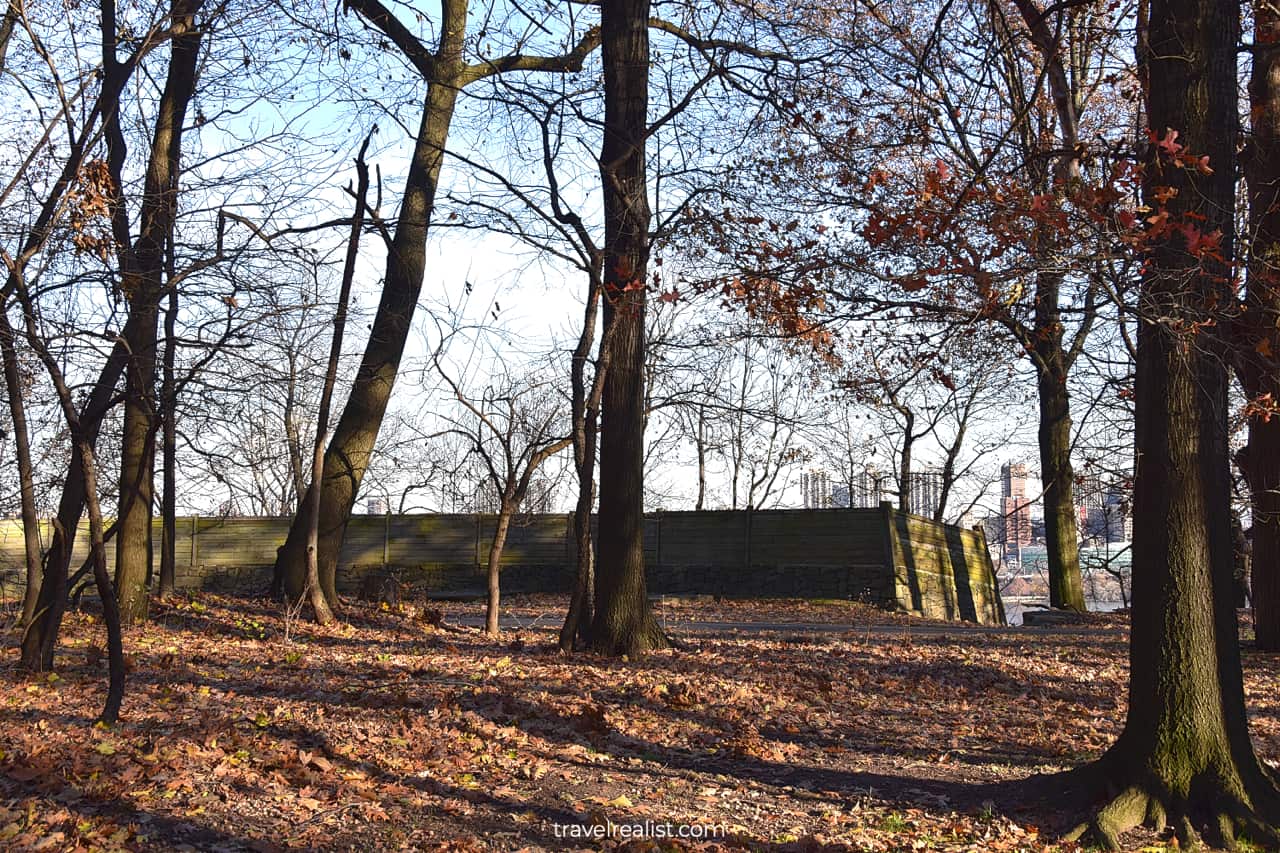
3. Block House
When you are done exploring exhibits at the Visitor Center, you could take a walk south along the cliff top. It would not take you long at all to arrive at the first Revolutionary War structure.
The Block House is next to the Mortar Battery. It has a very distinct and memorable shape. The Block House would likely be the only other structure in the park beside the Bridge that you would remember.
This building has two stories. The ground floor was a storage room. The second floor was the place where soldiers took post.
Block houses were a quite common structure in the fortifications of that time. They served as lookout posts. Soldiers used them to scout the area and alert the rest of the troops of an enemy in sight.
Like most other buildings in Fort Lee Historic Park, the Block House was restored. Original Fort Fee did not survive to this day. In fact, it was not even inside the current park boundaries.
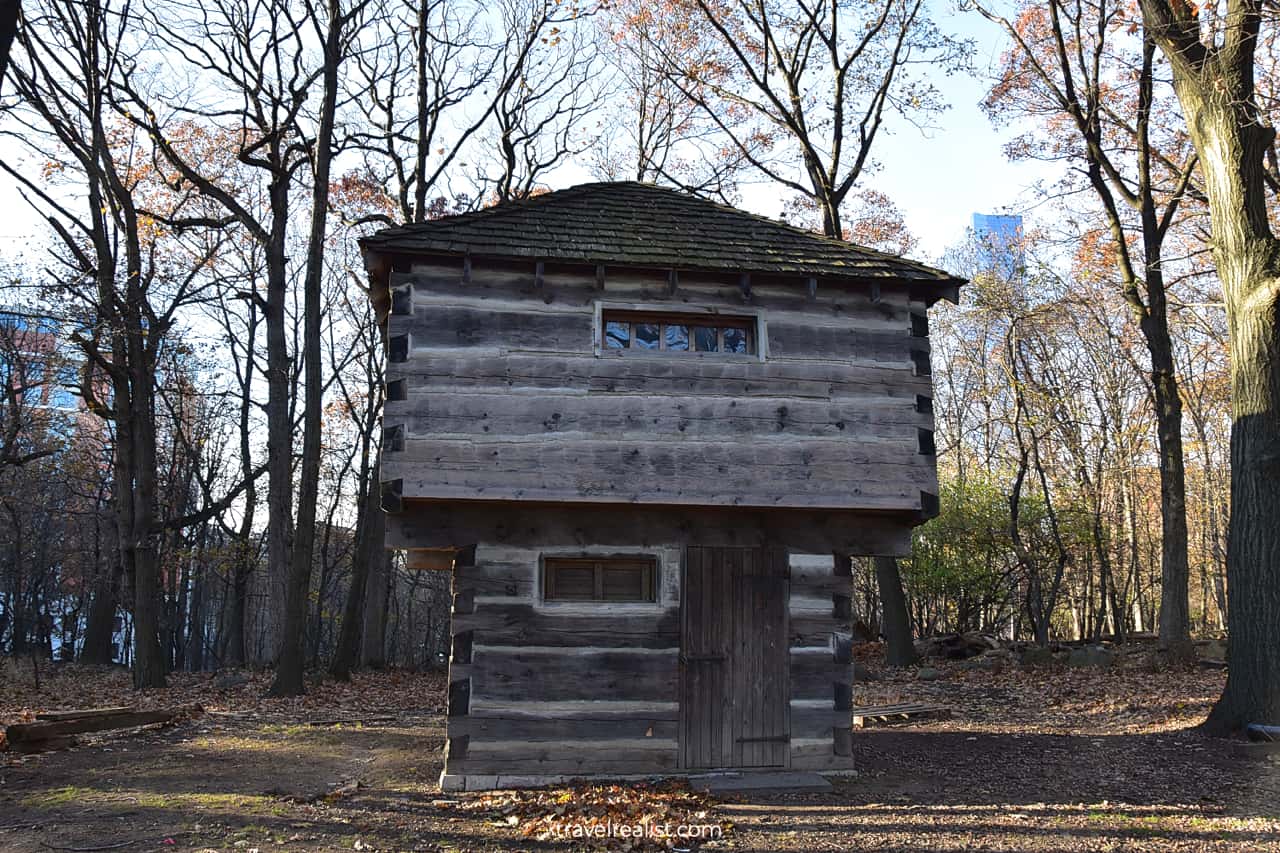
4. Mortar Battery
You might have high expectations from the Mortar Battery nearby after the Block House. But this structure is far less interesting to explore despite being in a perfect condition.
This battery has a stone foundation. A wooden wall is right above the foundation. Unless you know its purpose you might confuse this battery with a fence.
You need to put your imagination to test to see where the mortars used to be. It might be better to continue walking to the next structure instead.
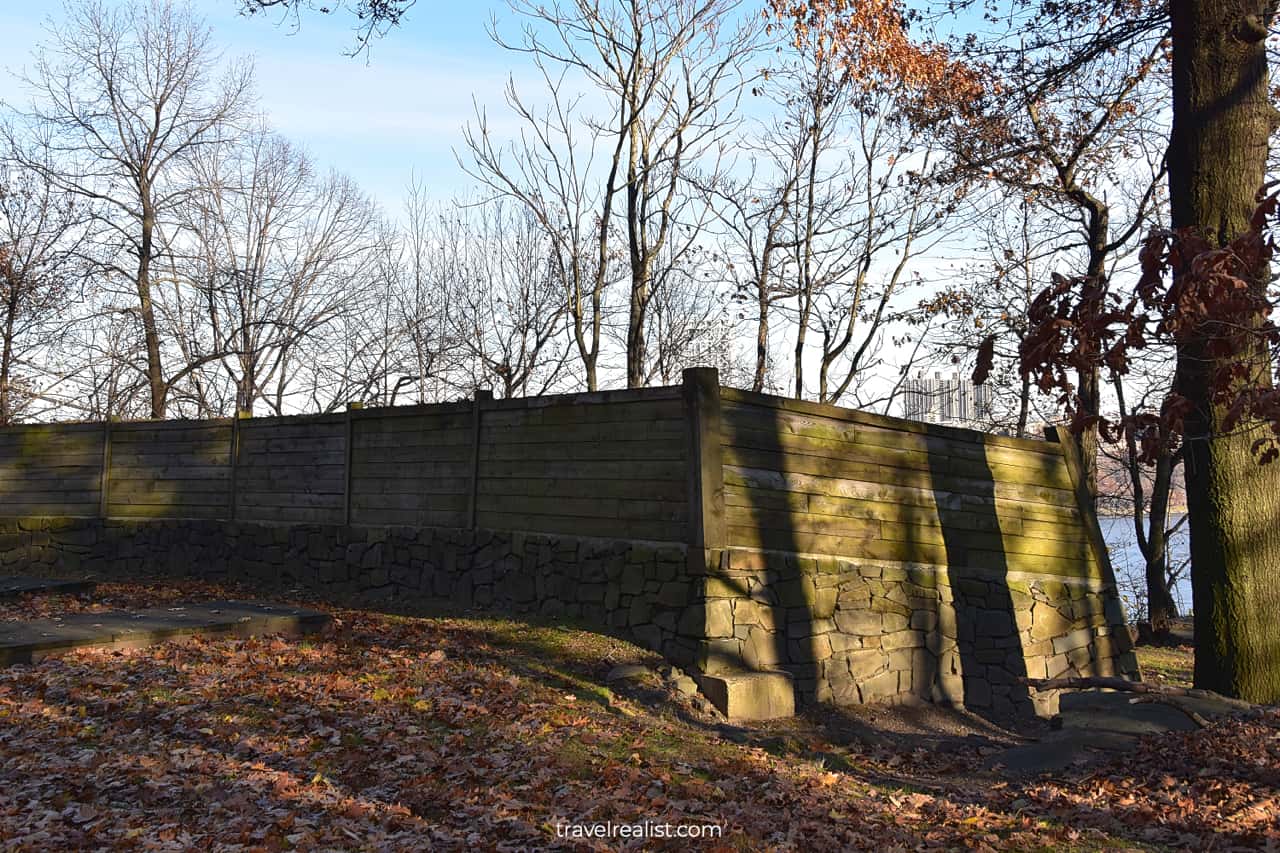
5. Barbette Battery
There will be no other structures for a few minutes. This is a great time to enjoy the nature of the Palisades. You could admire fall colors or spring blossom if you visit Fort Lee during these seasons.
The path through a forest will bring you to an area with lots of things to explore. The Barbette Battery is the largest of them. It is a stone wall with a wooden deck that housed a few cannons.
The name of this battery has to do with its design. The cannons would fire over a low wall instead of from a wall opening. This setup provided less protection from return fire. Yet, it was easier to build.
The cannons covered a large area below. Thanks to the high elevation of the Palisades, it was possible to control the crossing over the Hudson River.

6. Officer’s & Soldier’s Huts
The Barbette Battery has more than cannons and cannonballs. You will see the Officer’s and Solider’s Huts a few dozen feet (meters) behind the guns.
Do not confuse the huts with a warehouse building on the southern side of the Battery. Both are made from logs in a somewhat similar way.
The huts give you a better idea of what life looked like in Fort Lee back in the 18th century. You could also spend a minute or two at the Firing Step behind the Officer’s Hut.
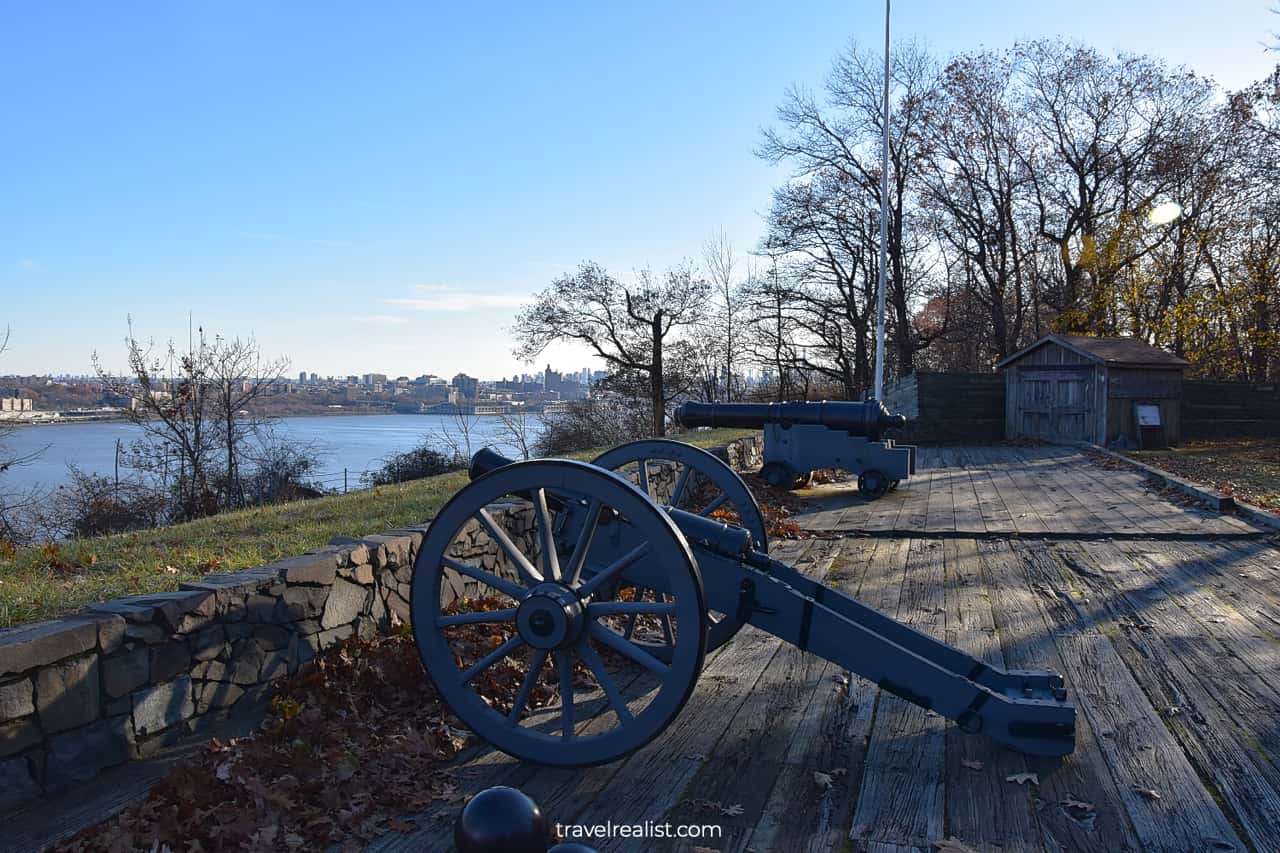
7. Main Battery
Once you finish exploring the huts at the Barbette Battery, you could get back on the path. It will bring you to the Main Battery in no time.
Despite the promising name, there are no cannons at this Battery. But you could see large wall openings where they would have been placed. You could use these openings as viewpoints.
The views are nowhere close to Liberty State Park or Castle Point Lookout in Hoboken. But you will get a glimpse of Upper Manhattan, Upper West Side, and Midtown Manhattan.
Overgrown trees are the main issue of this viewpoint. If the park rangers cut some of the branches, the views would improve right away.
The Main Battery is the last attraction in Fort Lee Historic Park. You will be next to the Edgewater Entrance to Palisades Interstate Park. It is the start of a 12-mi (19-km) Shore Trail.
This trail goes all the way to the New York state line up north. It is also a gateway to other, shorter trails in the park. You could easily spend a full day hiking these trails.
But your visit could be short if you do not plan on hiking in other areas of Palisades Interstate Park. In this case, you need to return to the parking lot via the same path.
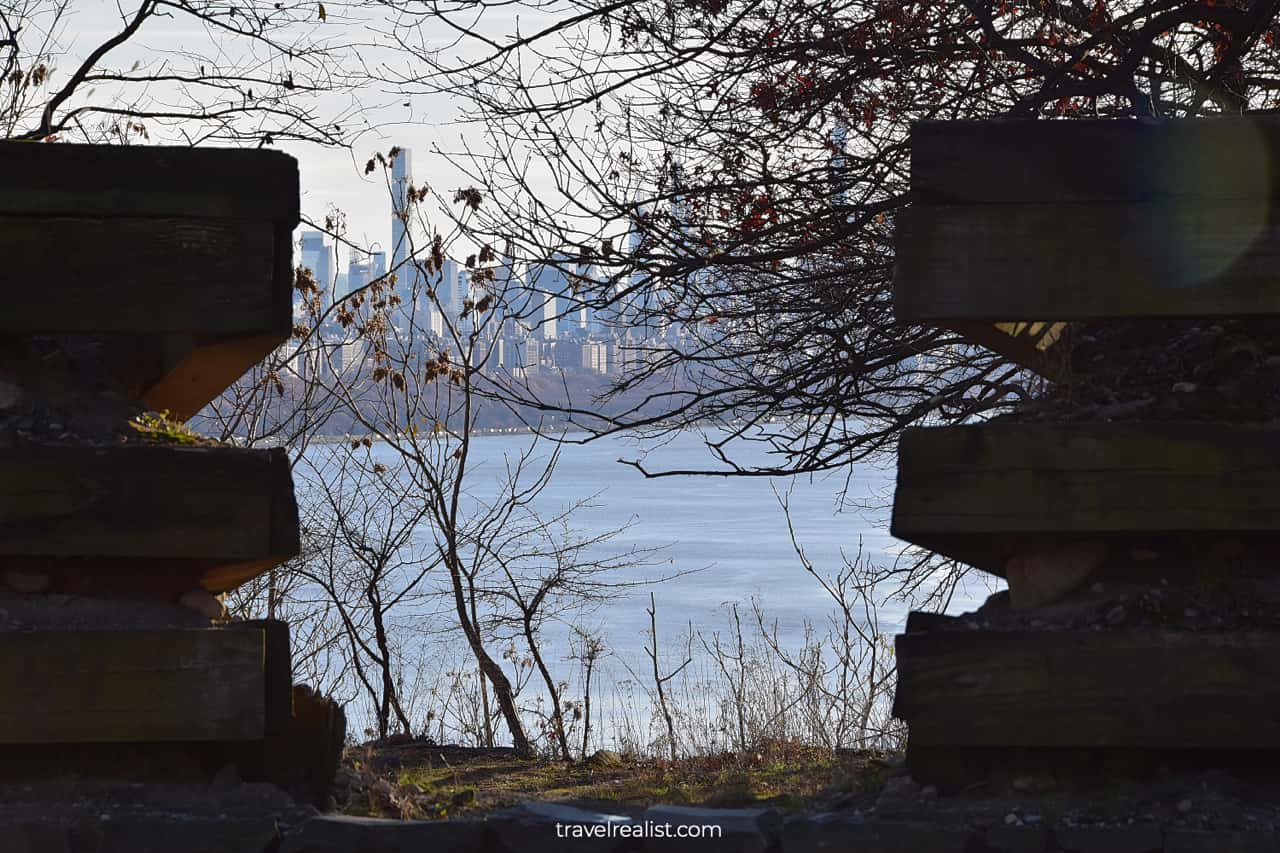
Continue with this Fort Lee Historic Park Guide. You will learn more about ways to get to the sights, entrance requirements, and places to stay.
Getting to Fort Lee Historic Park
Fort Lee Historic Park is in the same name borough in North Jersey. The park connects to Bayonne and Jersey City via the Hudson River Waterfront Walkway.
Fort Lee is just south of Interstate Highway I-95 and Palisades Interstate Highway. It is also right next to the George Washington Bridge between New Jersey and New York.
This location makes Fort Lee an easy place to reach by car. Of course, this is true if you do not have to deal with the New York City area traffic.
It is not a good idea to drive to Fort Lee on a weekday morning. The Bridge is a bottleneck for people driving to New York City for work.
As a result, you could lose hours in traffic jams. If possible, pick a weekend to visit Fort Lee and Palisades Interstate Park. You could take advantage of the open roads.
There is a spacious parking lot right next to the Visitor Center in Fort Lee. So, you do not need to worry about parking. It is one of the few places on the Hudson River Waterfront Walkway with a parking lot.
A bus is the only last-mile option if you prefer to reach Fort Lee by public transport. You could choose different bus routes depending on your starting point:
- Bus 158 and 159: New York City Port Authority Bus Terminal
- Bus 156: Port Authority and Englewood Cliffs
- Bus 188: JFK Blvd & 61st St station in West New York, New Jersey
- Bus Route 4 Jitney: Patterson, New Jersey and George Washington Bridge Bus Station in New York
Your fare depends on the distance. Fares for buses 156, 158, 159, and 188 start at $1.6 per adult one way. A ride from Fort Lee to Patterson is less than $6 on Route 4 Jitney bus.
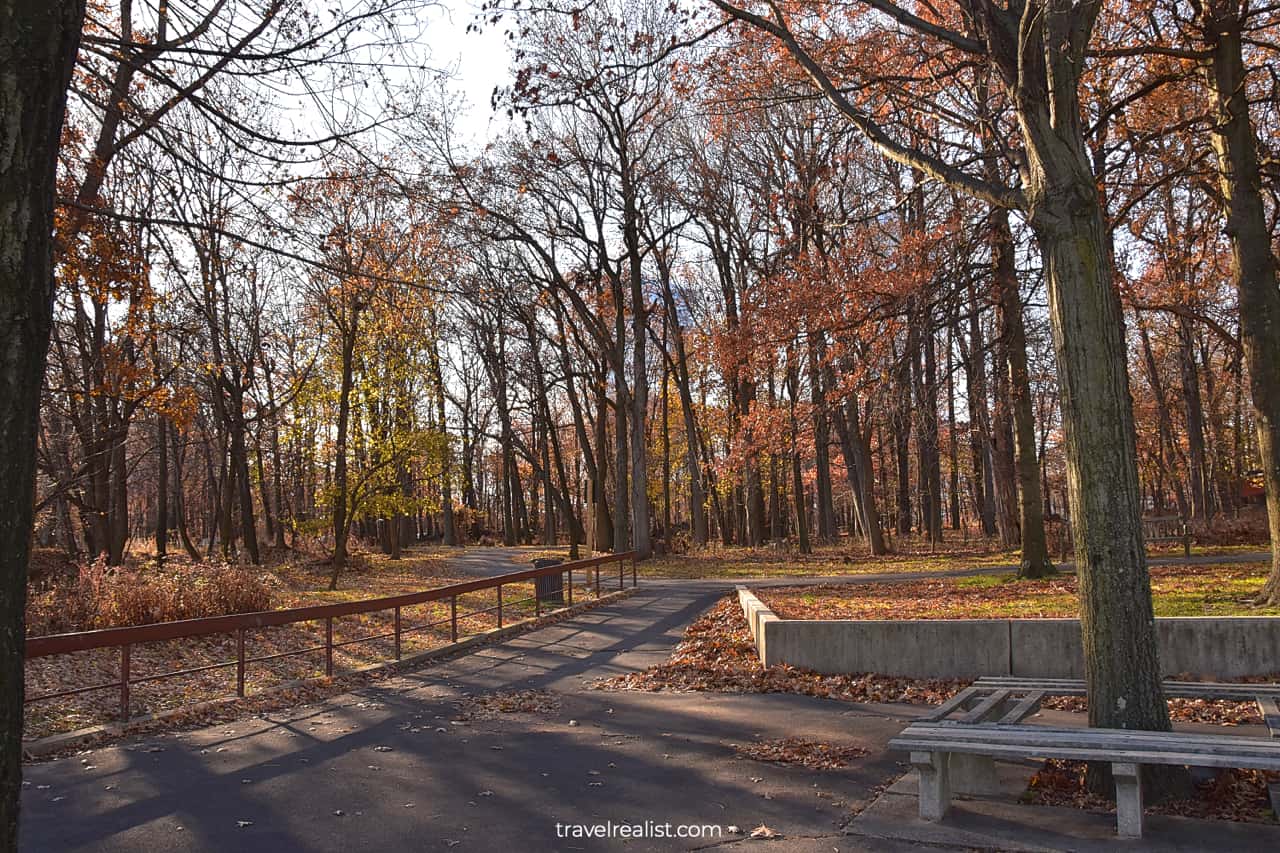
Where to Stay near Fort Lee
Fort Lee Historic Park is a small park. You do not need much time to visits its main sights. But you might choose to stay near the park before continuing with your journey.
In this case, look into Hyatt Place Fort Lee/George Washington Bridge. This hotel is a 35-minute walk from Fort Lee Historic Park.
If you do not have a car, your options are limited. You could cross the George Washington Bridge to New York by bus. Check out Radio Hotel in Washington Heights, New York.
A car would allow you to look for places to stay further away from Fort Lee. Follow the general rule: the further a hotel is from NYC, the more likely it is to offer free parking.
Comfort Inn Edgewater on Hudson River is one of the few exceptions to this rule. This hotel is right on the riverfront. Yet, you could get free parking there.
For more places to stay continue on Interstate Highways I-80 west and I-95 south. Take a look at Hampton Inn & Suites Teaneck/Glenpointe. It is a great hotel within a short drive from Fort Lee.
Home2 Suites By Hilton Hasbrouck Heights and Fairfield Inn & Suites by Marriott Paramus are also great choices. They are perfect for exploring other sights in New Jersey.
You could pair a stay at either hotel with a visit to Ramapo Mountain State Forest or Ringwood Manor. The other option is to continue with NYC exploration with a ferry ride to the Statue of Liberty.
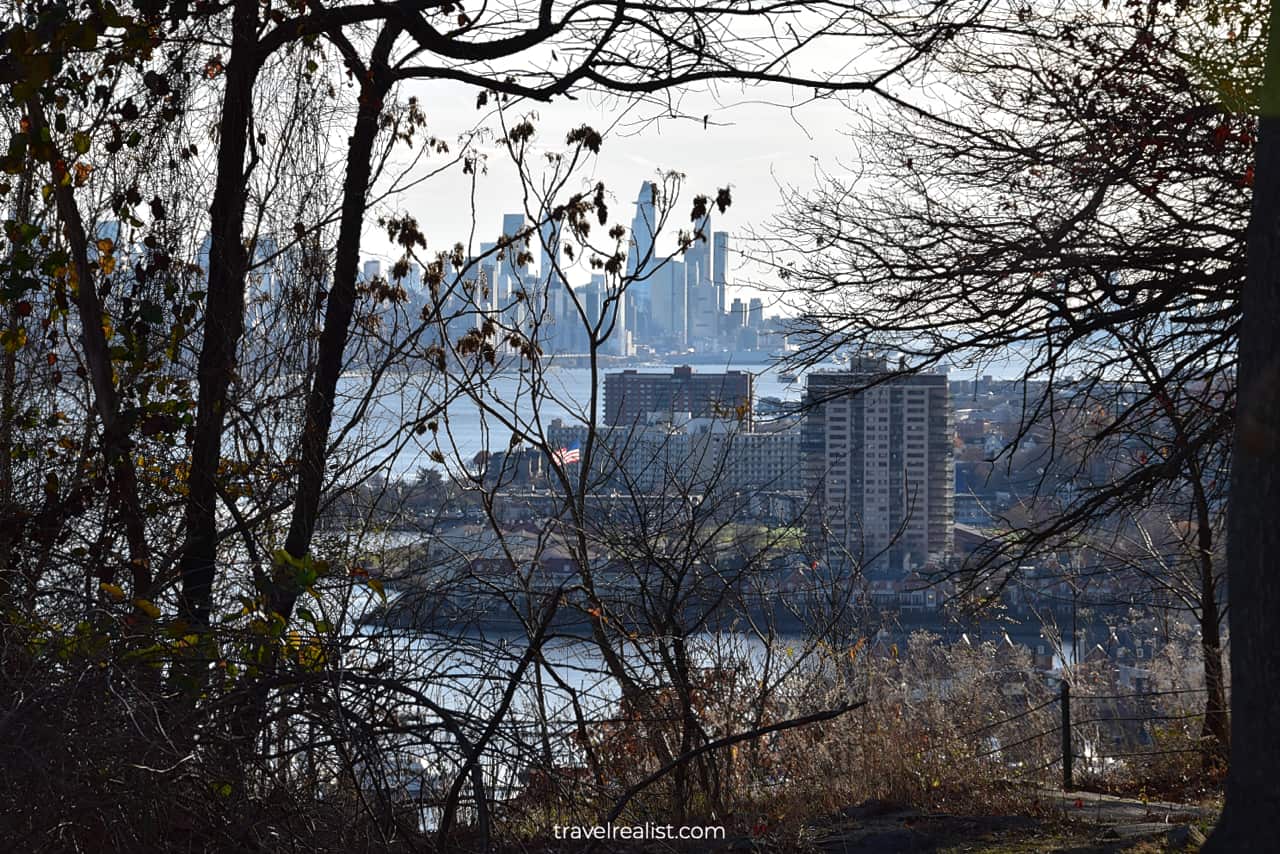
Entrance Requirements & Passes
Fort Lee Historic Park is open from 6 a.m. to 9 p.m. between April and October. The winter hours are shorter. You could visit the park between 6 a.m. and 7 p.m. from November to March.
The Visitor Center is open from 10 a.m. to 4:45 p.m. from Wednesday to Sunday. Keep the day of the week in mind to avoid closed doors on Monday and Tuesday.
Fort Lee Historic Park does not charge entrance fees. You could see the Visitor Center exhibits, batteries, and huts free of charge. But you need to pay a parking fee if get to the park by car.
It costs $1.5 per hour to park at Fort Lee on the weekdays. A weekend rate is higher at $2.5 per hour. This fees apply year round. Pay at a meter to avoid getting towed at your expense.
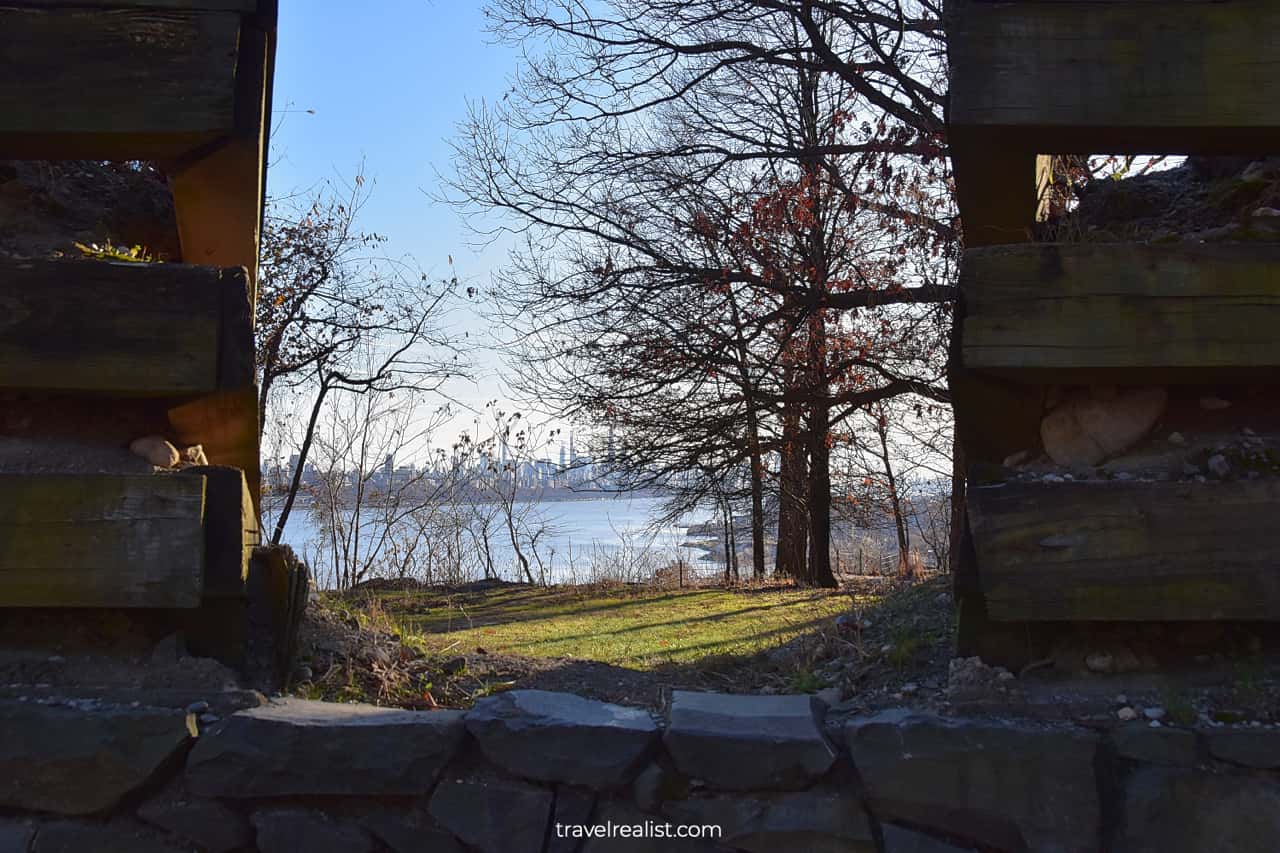
Takeaways: Fort Lee Historic Park
Fort Lee Historic Park is a nice small park. If you find yourself in the area and have half an hour to spare, this park is worth a stop.
Fort Lee gives you a close look at the George Washington Bridge from a viewpoint. The Hudson River and Upper Manhattan panorama is another reason to visit this park.
The Visitor Center exhibits are a chance to refresh your knowledge of the American Revolutionary War. You could also explore the restored batteries, huts, and a block house.
You could use Fort Lee as a gateway to Palisades Interstate Park trails. Your visit will take at least a few hours if you hike any of the park trails.
Still, it is hard to recommend Fort Lee if you need to make a long detour to reach it. The park sights are just not enough to justify the additional time and cost of gas.
It is best to keep your expectations low when visiting Fort Lee Historic Park. This way, you could be delighted once you experience the fort and its views.
Take a look at this Video List of Best Places to Visit in New Jersey. And visit the YouTube channel for the latest videos.
Frequently Asked Questions
Fort Lee Historic Park is a quite small park. Still, there are a few things to do during your visit:
– Learn about the American Revolutionary War at the Visitor Center Museum
– Find the differences between the Barbette and Mortar Batteries
– See a memorable design of the Block House
– Imagine what life at Fort Lee was by stopping by the Officer’s and Soldier’s Huts
– Admire the beauty of the George Washington Bridge
– Enjoy views of Upper Manhattan and Upper West Side
– Hike one of the trails in Palisades Interstate Park
– Take the Hudson River Waterfront Walkway to destinations as far as Bayonne
Fort Lee Historic Park is a small park in New Jersey near the George Washington Bridge. It is part of the massive Palisades Interstate Park. That park spans along the Hudson River beyond the New York state line.
The grounds of Fort Lee Historic Park are open from 6 a.m. to 7 p.m. (winter) or to 9 p.m. (summer). The Visitor Center Museum works from 10 a.m. to 4:45 p.m. from Wednesday to Sunday year round.
Fort Lee Historic Park and Palisades Interstate Park do not charge entrance fees. But you need to pay for parking. It costs $1.5 per hour on weekdays and $2.5 per hour on weekends.
Bus is the only way to reach Fort Lee Historic Park by public transport. You could take Buses 158/156/159 from New York Port Authority to Fort Lee. This trip takes between 40 and 60 minutes. Your other options are buses 188 and Route 4 Jitney.
Safe realist travels!


